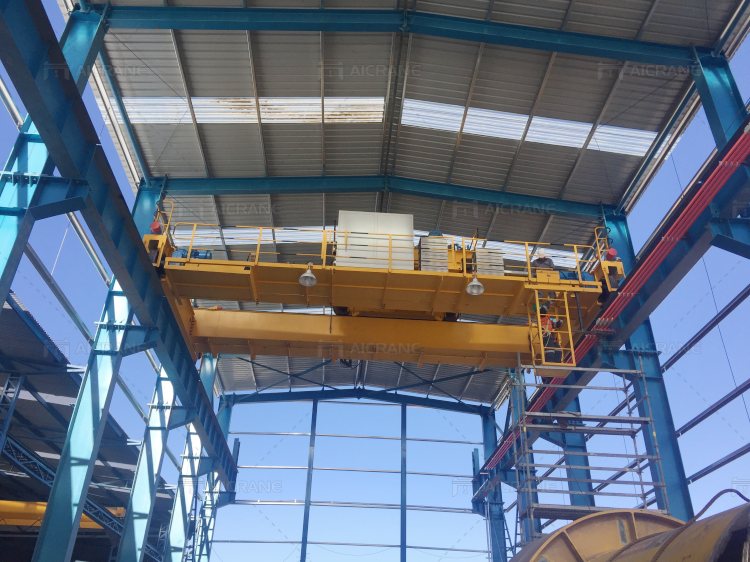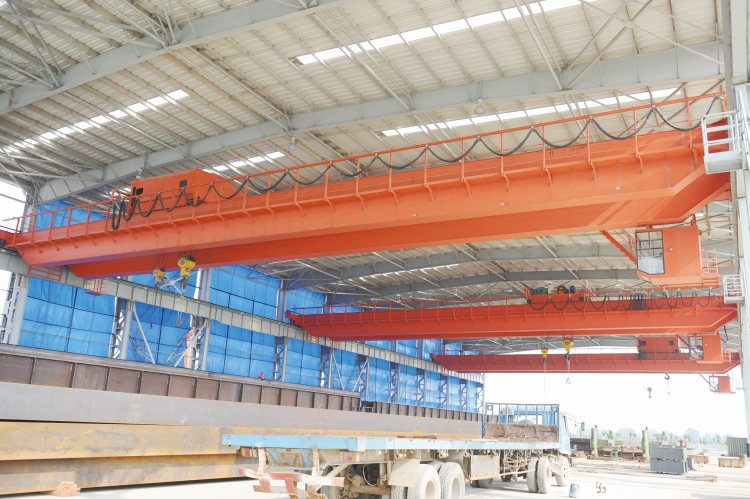In the realm of heavy industry and manufacturing, the efficient and safe movement of large loads is essential for maintaining productivity and ensuring operational success. This article explores the critical role played by 50 ton bridge cranes in managing heavy loads, highlighting their capabilities, applications, and operational considerations.
Introduction to 50 Ton Bridge Cranes
A 50 ton bridge crane is a formidable piece of equipment designed to handle substantial weights with precision and reliability. These cranes are typically used in industrial settings such as steel mills, shipyards, automotive plants, and large-scale manufacturing facilities where the movement of heavy materials and equipment is a routine part of operations.

The key components of a 50 ton bridge crane include a robust bridge structure that spans the length of the workspace, supported by end trucks on either side of the facility. The bridge is equipped with a hoist and trolley mechanism that allows for vertical and horizontal movement of the load, offering versatility and control during lifting and positioning tasks.
Applications and Versatility
The versatility of a 50 ton bridge crane enables it to perform a wide range of lifting tasks across various industries. In steel mills, these cranes are used to handle massive coils, ingots, and finished products, facilitating material movement throughout the production process. Similarly, in shipyards, bridge cranes are instrumental in lifting ship components and assembling vessels.
Automotive manufacturing plants benefit from 50 ton overhead bridge cranes for lifting heavy machinery, molds, and vehicle components during assembly. In the construction industry, these cranes are deployed at precast concrete plants for handling large concrete elements such as beams, columns, and panels.
Efficiency and Productivity
The primary advantage of utilizing a 50 ton bridge crane lies in its ability to enhance efficiency and productivity. By mechanizing the lifting and movement of heavy loads, these cranes reduce manual labor requirements and accelerate operational processes. Tasks that would be labor-intensive and time-consuming when performed manually can be completed swiftly and safely with a bridge crane, leading to overall productivity gains within the facility.

Safety Considerations
Operating a 50-ton overhead crane requires strict adherence to safety protocols and guidelines due to the significant weight and potential risks associated with lifting operations. Comprehensive training for crane operators is essential to ensure competency in maneuvering heavy loads, monitoring crane performance, and recognizing potential hazards. 50 ton bridge cranes are double girder bridge cranes due to the large load capacity.
Regular maintenance and inspections of the crane components are imperative to prevent mechanical failures and ensure optimal performance. Safety features such as overload protection systems, emergency stop controls, and audible alarms further enhance the safety of crane operations, minimizing the risk of accidents and injuries.
Challenges and Solutions
Despite their robust capabilities, 50 ton overhead cranes face challenges related to load stability, precision positioning, and coordination with other equipment and personnel in the workspace. To address these challenges, advanced crane lifting machine control systems incorporating automation, remote operation capabilities, and real-time monitoring have been developed to optimize efficiency and safety.
Conclusion
In conclusion, the use of a 50-ton bridge crane represents a cornerstone of modern heavy industry, enabling the efficient management of heavy loads and enhancing productivity across diverse manufacturing sectors. By harnessing the power of this formidable equipment, industries can streamline their operations, reduce labor costs, and ensure the safe handling of oversized materials and equipment. As technological advancements continue to evolve, the role of 50-ton bridge cranes will remain indispensable in supporting the growth and competitiveness of industrial enterprises worldwide.
